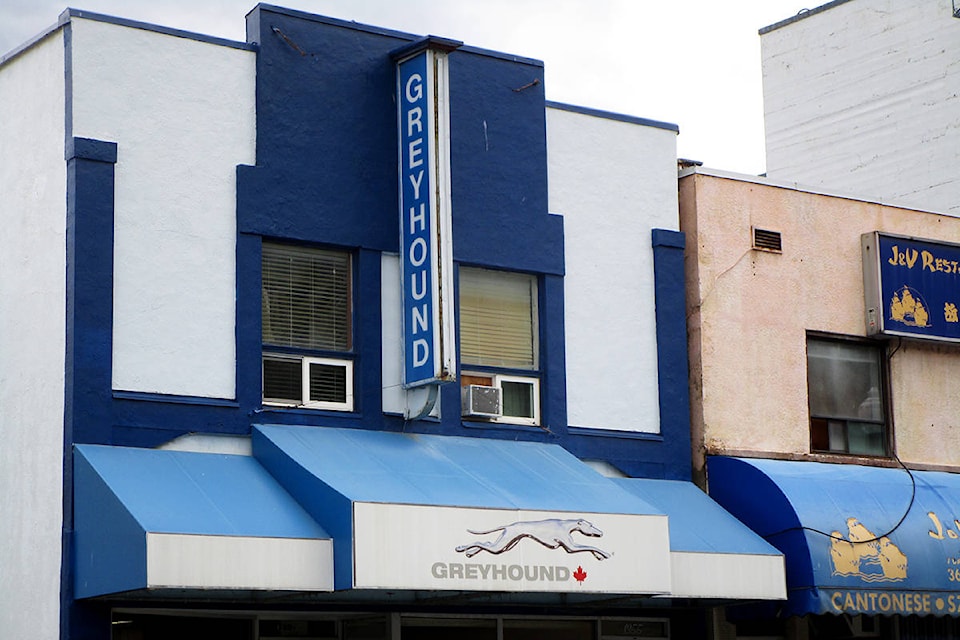More than 20,000 passengers boarded a Greyhound bus to arrive at - or leave - Trail, Castlegar, Nelson and Grand Forks last year.
That’s a lot of riders that will be left in the lurch when Greyhound pulls the brakes on service this fall.
Related story here: Greyhounds cuts for Kootenays
Related story here: Nelson Greyhound cuts approved
Related story here: Council concerned with Greyhound cuts
The only glimmer of hope for those Kootenay commuters left without wheels, is that a local outfit steps in to fill the void.
“Our government is confident that local operators will see an opportunity to bring a badly needed service to the parts of the B.C. most affected by Greyhound’s decision,” Minister Katrine Conroy, MLA for Kootenay West, told the Trail Times.
“The Passenger Transportation Board, who is responsible for the licensing of inter-city bus service, will be moving new inter-city bus applications to replace Greyhound to the front of the line.”
On July 12, Minister of Transportation and Infrastructure Claire Trevena held a meeting with ministers from Western Canada, and a representative from Ontario, explained Conroy.
“The ministers have agreed to write to the federal minister of transport to advocate for all Canadians who need access to safe, reliable and affordable transportation,” she said.
“Minister Claire Trevena is committed to sitting down with service providers, the private sector and local government, and will continue to be in close contact with provincial counterparts, to explore what other options are available to keep communities connected.”
Deep cuts to the number of runs through the Kootenays began five years ago.
Before those slashes were made - the Highway 3 run from Kelowna through the Kootenays and to Calgary was reduced from four times weekly to once per week - Greyhound’s then-regional manager Grant Odsen told the Times, “ridership in that whole (Kootenay) corridor hasn’t been good for quite some time.”
He attributed Greyhound’s declining ridership to cheaper airfares, more people driving and changes in traveling habits.
Odsen said the bottom line was simple - fewer people were taking the bus.
Nevertheless, many were caught off guard last week when Greyhound announced “routes in rural parts of Canada -specifically Western Canada - are just not sustainable anymore,” and that service would end Oct. 31.
“We were very disappointed that they did not reach out to the province to find solutions to keep people connected,” Conroy said. “Something we would have expected given their long history in the province.”
The elimination of this service entirely will severely limit options for ground transportation for people, she added.
“It will have a huge impact on people who depend on Greyhound … People need access to a safe, reliable and affordable transportation option to get between communities in B.C., and to get to and from Alberta.”
Locally, Greyhound stopped driving into Trail decades ago.
Rather, Trail has been serviced by a connector route with Silver City Stage Lines for both freight and passengers. The shuttle connects with Greyhound’s schedules in Castlegar for continued travel in both directions.
As far as local job loss, Greyhound said, “We can confirm that there are no Greyhound employees at these locations as they are operated by contract agents.”
Silver City Stage Lines did not offer comment and a spokesperson from the Trail Greyhound depot directed all questions to their head office.
Greyhound Canada has provided service on B.C.’s roadways since 1929.
“Since 2010 however, market conditions for inter-city transportation services have become increasingly challenging,” said Peter Hamel, Greyhound Canada’s regional vice-president for Western Canada, via email.
“Despite best efforts over several years, ridership has dropped by 46 per cent since 2010 in British Columbia, province-wide. We sympathize with the many small towns and rural areas such as Trail, where we have proudly provided service, but simply put, we can no longer operate unsustainable routes.”
Greyhound provided the Times with some ridership stats (April 2017 to March 2018) which include: 1,349 passengers bought a ticket from Trail and 1,207 people arrived in Trail via Greyhound; 2,873 people boarded in Castlegar and 2,801 arrived in Castlegar via Greyhound; in Nelson, 4,647 used Greyhound to leave the city and 4,645 bought a ticket to arrive in Nelson; 1,475 riders boarded in Grand Forks and 1,454 people arrived in the city via Greyhound.
During the same period, freight service processed approximately 24,000 packages shipped to/from Kelowna-Creston and approximately 20,000 packages to/from the Okanagan area.
